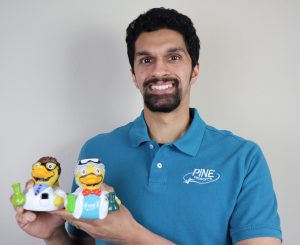 Elton Cairns on life before, during, and after COVID-19
Elton Cairns on life before, during, and after COVID-19
To round out our series, The ECS Community Adapts and Advances, we checked in with Past ECS President Elton J. Cairns, who has been a member of the Society since 1961. Over his 60+ years with ECS, he was active in the Niagara-Mohawk Section; served on many Society and division committees; was Battery division editor; held all the offices of the Physical Electrochemistry division (Chairman, 1981-1983); organized Society meeting symposia; and was elected Vice-President (1986) and President (1989-1990). Dr. Cairns received the Turner Book Prize in 1963 and was elected Fellow of The Electrochemical Society in 1991. All of this on top of teaching, mentoring, and making important contributions to science! He is Professor of the Graduate School, Berkeley College of Chemistry, University of California, Berkeley, U.S.
Life outside the lab
“We have been in shut-down for over a year without access to the lab—even though now I am vaccinated. I have been active working with some grads and postgrads through Zoom. Mostly I help them with articles they seek to publish. As for my own work, I filled the year with activities related to publishing—the nuts and bolts of the publishing process. I stay in contact with colleagues around the world through Zoom and Skype. (more…)






 For our series, The ECS Community Adapts and Advances, Alice Suroviec describes pandemic-related challenges—and benefits—of being a mother, professor, scientist, researcher, administrator, homeschooler, and crisis manager.
For our series, The ECS Community Adapts and Advances, Alice Suroviec describes pandemic-related challenges—and benefits—of being a mother, professor, scientist, researcher, administrator, homeschooler, and crisis manager.  In our series, The ECS Community Adapts and Advances, Jeffrey “Jeff” Henderson opened up about what he and his colleagues are worrying about—and some tips to getting through this unprecedented period.
In our series, The ECS Community Adapts and Advances, Jeffrey “Jeff” Henderson opened up about what he and his colleagues are worrying about—and some tips to getting through this unprecedented period.  In our series, The ECS Community Adapts and Advances, Yue Kuo talks about the role of ECS members in solving humanity’s grand challenges, including the pandemic. Yue holds the Dow Professorship in the Artie McFerrin Department of Chemical Engineering with a joint appointment in the Department of Electrical Engineering and Department of Materials Science and Engineering at Texas A&M University (TAMU). After receiving his BS from National Taiwan University in 1974,
In our series, The ECS Community Adapts and Advances, Yue Kuo talks about the role of ECS members in solving humanity’s grand challenges, including the pandemic. Yue holds the Dow Professorship in the Artie McFerrin Department of Chemical Engineering with a joint appointment in the Department of Electrical Engineering and Department of Materials Science and Engineering at Texas A&M University (TAMU). After receiving his BS from National Taiwan University in 1974,  In our series, The ECS Community Adapts and Advances, Janine Mauzeroll reflects on balancing professorship and motherhood while home schooling and dealing with loss. Janine is Associate Professor of Chemistry at McGill University, Canada. She received her PhD at the University of Texas at Austin, US, and did her postdoc at the Université de Paris, France. Her research group studies electron transfer reactions using electrochemical and biochemical methods and scanning electrochemical microscopy to study transport events in and out of human cancer cells. Janine serves as technical editor for the organic and bioelectrochemistry (OBE) technical interest area of the Journal of The Electrochemical Society.
In our series, The ECS Community Adapts and Advances, Janine Mauzeroll reflects on balancing professorship and motherhood while home schooling and dealing with loss. Janine is Associate Professor of Chemistry at McGill University, Canada. She received her PhD at the University of Texas at Austin, US, and did her postdoc at the Université de Paris, France. Her research group studies electron transfer reactions using electrochemical and biochemical methods and scanning electrochemical microscopy to study transport events in and out of human cancer cells. Janine serves as technical editor for the organic and bioelectrochemistry (OBE) technical interest area of the Journal of The Electrochemical Society.  Chris Beasley and Gamry step up to today’s challenges
Chris Beasley and Gamry step up to today’s challenges